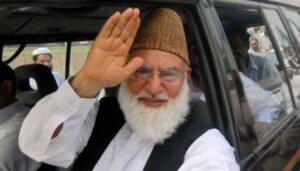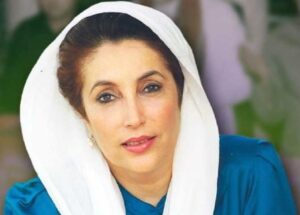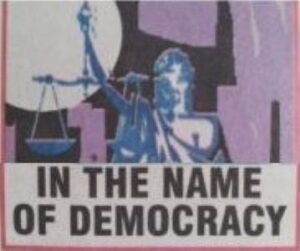The business of marriage

By Shahid Rizvi
We are well aware of the traditional part matchmakers played in our society in times gone by. Playing the marriage market was a lucrative way to make those few extra rupees besides getting the attention of the affluent who in turn for a ‘good’ proposal would bestow gifts to the matchmaker. Often the job of finding a match was taken by professional barbers, male and female domestic servants who had been in families almost all their lives.
With the passage of time and cultural changes, the services of these old retainers were dispensed with and newer, bolder methods were adopted. The emergence of marriage bureaus became noticeable and soon a number of reputable offices cropped up in various parts of the sub-continent replacing the old traditional marriage makers in village communities and old-fashioned cities.
With the advent of commercialization in society, the emergence of intensely commercialized institutions of marriage makers is a natural part of development.
Everywhere, in every city, such agencies have cropped up and become an essential requirement of our present-day society. They have taken into their hands the profession of making marriages happen.
The old system of arranging marriages was best suited to that society. Sparsely settled societies had little cohesion.
There was time for leisure and ‘mushata’ and ‘hajjam’ or barbers were socially responsible for providing information to families. There were no ‘fixed rates’ for services rendered, just a suggestion that the family would show generosity. They had an important role to play and they played it well.
Marriage ‘consultations’ are as old aspect of our traditions. The consent of a boy and girl to marry is the basic and elementary requirement of every marriage in all beliefs, religions, and traditions. It is a basic right of people inhabiting every part of the world. European, American, African, Australian, and Euro-Asian civilizations all allow direct contact between the boys and girls to choose their partners. But there are norms that have been established in the South Asian culture which have since long developed the institution of marriage making. Responsible parents choose a spouse for their children. This custom is in vogue in India, Burma, Afghanistan, Pakistan, and other parts of the area. Love affairs between boys and girls are not encouraged. And in more orthodox societies even considered most derogatory for the families, especially for the family of the girl.
The important element of this custom is that the girl is not free to select her husband while the consent of the boy is essential. This brings to light the whole crux of the matter.
The institution that has been established for centuries now, shows it is a male-dominated one. It indicates clearly the dependent position of women in society.
Women are dependent in societies all over the world, but not subjected to such insults as those that exist in South Asian countries. Deprivation from all rights and rituals made to elevate the stature of the male are a proof of the persisting system. In some areas, a man’s wives, on his death, are distributed in the family. This institution is also a result of such despondent societies.
The contemporary concept of a marriage bureau is not very different from the old established culture except that a centre is established, Intensely commercialized marriage bureaus are places that families have easy access to and where, on making contact, information is disseminated. It has become the need of the hour because of the many changes society has undergone. The break-up of the old social structure, the increasing tendency to turn professional, the growth of commercialization, less time to interact with people let alone the ability to pay attention to civil services, the emergence of populous cities, the habitation of families in far-flung areas, and very importantly, it has been noticed that boys and girls of marriageable age prefer marrying later in most societies. The wider scope of choice has given impetus to these agencies though inter-family marriage still thrives.
In Karachi, according to an estimate, the average number of marriages annually is 45,000. The share that can be accredited to marriage bureaus cannot be ascertained but by all appearances it seems to be running into something like 3.3% which is rather high on the scale.
The number of marriage bureaus and their location gives a picture of their scope and influence. There is an All Pakistan Marriage Bureau Association, a registered body, which has been lying defunct for the last few years. Mrs. Zameer Farooqi, is its present General Secretary. The major drawback in the functioning of APMBA is that there is no joint or collective interest between members. With a membership of 12-15 members, it cannot be otherwise. The number of marriage bureaus in the city is no less than 200. A few older agencies having good reputations like Kamiyab Shadi Dafter, Clifton Women Welfare Society, Nazimabad Women Welfare Society and so on. Most of the others have mushroomed up after seeing the success of the above mentioned agencies. But whereas the aforementioned businesses remain open throughout the year, these remain closed most of the time only opening up when the ‘marriage season’ is in full swing …..and yes there are definite ‘marriage seasons’, they occur during the festive months and when the weather is cooler. These agencies are run by those who keep it as a side business as they devote time to it on a part time basis.
What has also come to light is the tendency of housewives to joining in the fray by taking up a ‘consultancy businesses from their homes. This has increased the number of people in this profession even though most of these women are inexperienced and are clueless about dealing with the public. However, some of them do get by well enough.
That is not a simple job is obvious as there are as many dropouts as there are new aspirants. To get a form filled up and get oneself registered is not enough. For the main test comes when one has to carry the procedure to the end. It needs expertise, especially on the public relations front. To deal with a client satisfactorily, to make him feel that all due attention is being given to him, is a tedious job. Clients, who are left dissatisfied hinder the reputation of those who are they are registered with. And the biggest test is dealing with people from whom you are trying to extract money from your services. This is the reason that most women give up after a very short while and the numerous marriage bureaus close down after a short period. The key here is that success needs greater personalized service.
The agencies categorize their clients into four groups. Category A enlist those who pay a full registration fee of Rd.500/-. Category B are those who pay some amount and promise the rest later. Category ‘D’ is meant for orphans, widows, and those who border on the poverty line, especially women. These categories are maintained only by permanent agencies like Clifton Women Welfare Association run by Mrs. Mumtaz Qureshi, Kamiyab Shadi daftar and a few others.
The job is as tricky as it is difficult. This is essentially due to the varied and the noncomforting requirements of the parties concerned. The general requirements of the bride groom’s families are that the girl be young, very very beautiful, educated, from a wealthy and respectable family, preferably a green card holder. Most of the families do like working woman. On the other hand, the bride’s families are less demanding. A healthy young man with a job in hand, from an educated, respectable family is all they ask.
The variable factor is further highlighted as the boy’s family go on trying as long as they can so that they get all they have set out for. Rejecting several proposals is of no consequence to them. The girls families are however complacent. They are prone to be less demanding as they are often compelled by the circumstances to marry off their daughter before she gets past what is considered the ‘marriageable age’.
The demands are lofty but conflicting and met only when families agree to reduce their standards. Negotiations take both time and effort.
The marriage bureaus with good high reputation, claim a good ratio of success. Exact figures of candidates registered with the marriage bureaus are not available but an estimate of 1000 persons registered per year is suggested to be the maximum for a vey good bureau and much less for others. This figure includes 300 to 400 for category ‘A’ and the rest for the other grades. Comparing it with the actual marriages solemnized as per record of Nikah registrar, the proportion goes up by ——percent, which is quite reasonable.
Mr. Ismail Khan, a social worker and director of Kamyab Shadi Daftar, an institution run by Mrs. A. Ghaffar, said the establishment is now into its 14th year. He said that his organization has registered many candidates and claims a success of four to five percent. Giving an explanation to this seemingly low ratio, Ismail Khan said that it is due to the strict and rigid conditions upheld. He said that when proposals are amended or delayed, they are either rejected or loose their validity. And that families with high expectations, normally lose sight of their own shortcomings. Mr. Ismail, however, holds belief that marriage is written in the bureau. He has seen very unexpected marriage solemnized and finds this very satisfying.
Mrs. Mumtaz Qureshi, directing the work of Clifton Women Welfare Association, is a well-known social worker.
The situation that she has been running is probably the oldest, dating back to 1979.
Mrs. Qureshi claimed a success ratio of 40 percent where girls are concerned and 60 percent where boys are concerned. On visiting her offices, one appreciates that claims do not appear to be overzealous.
She runs two offices – one in Clifton and another in Gulshan-e-Iqbal-and both remain crowded at all times.
When contacted, she said that the problems regarding girls, particularly those who are either not very good looking average, or their families have very high demands, have to wait for a longer time.
Mr. Qureshi registers candidates who are deserving free of charge. She has proved to be a devoted in the field.
It is surprising that in spite of marriage bureaus not being required to be registered under the law, the number of malpractice cases are sporadic and far between. But it would be better if certain laws were formulated to regulate their functioning as this would on the one hand, enhance the prestige of genuine and reputed agencies, encouraging devoted workers. And, on the other hand, it would save the public from being duped by fake and non serious agencies.
So who are the people who turn to such agencies. There are several types but a few parents who were interviewed were Mrs. Farzana Saeed, mother of a daughter B. Ed age 26 years. She said that she had waited for a doctor’s proposal for her girl. The requirement was based on the fact that the Saeed’s were a wealthy family. Now whereas the age registered was 26 years, her daughter was in reality 30 years old.
Mrs. Saeed was not prepared to reconsider any alternative proposals for her daughter and has been waiting for the last two years for her dreams to materialise.
Mrs. Maheen wanted a wonderful girl for her son. She demanded a high dowery because her son was a marine in Saudi Arabia. Her efforts to find this paragon are still going on —- for the last two years.
Mrs. Kaleem also demanded a high dowery and a very beautiful bride for her son. But in the case of her daughter, it was another story. For this fair girl she wanted an undemanding boy. The disparity was confounding but she insisted that it was the custom of the day!
The ritual of looking for exorbitant doweries, conforms with the selfish, money grabbing, materialistic tendencies taking root in out nouveau rich society. Besides creating paradoxical situation, it upsets the whole infra-structure and marriage become so cumbersome that one is forced to consider whether they are made in heaven or not.








